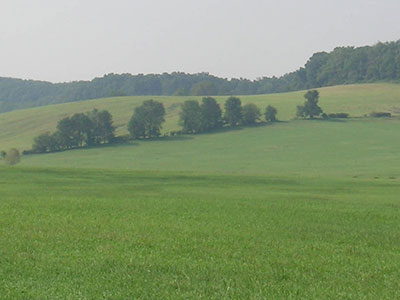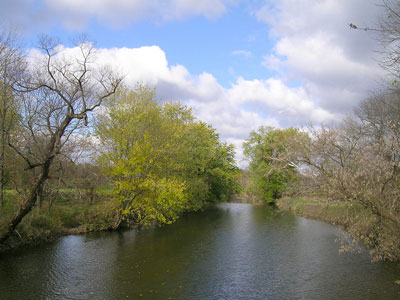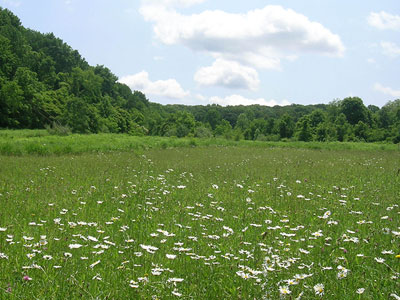East Brandywine Township, through its Open Space Committee, works to identify potential open-space properties and explain the conservation options to those property owners, including conservation easements.
Since a property owner retains rights to the conserved land, there is no expenditure of public funds to maintain the property.
How it Works
A conservation easement is established by mutual agreement between a landowner and a private land trust, conservancy, or government, and limits certain uses of the land in order to achieve particular conservation objectives while keeping the land in the owner’s control.
Beginning in the 1940s, Chester County landowners established some of the nation's first non-profit land trusts. The purpose of land trusts and conservancies is to protect open space from development by either acquiring land in-fee or by protecting it with a conservation easement. Because of these open space pioneers, the County now has over a dozen land trusts which together have protected open space on thousands of acres of property within the County.
When a land trust or conservancy acquires an "easement" on a property, it does not purchase the property from its owner. Instead, the trust makes a contract with the landowner, which allows the trust to have exclusive use of the land for a specific purpose. Put another way, the trust removes from the owner some of the rights to use the property. Typically, conservation easements limit future development of properties. The owner may continue to use the land as the owner wishes, within the constraints agreed to when establishing the easement. As the holder of the conservation easement, the land trust has the right to block inappropriate uses of the land.
Benefits
Conservation Objectives
Conservation easements assist land trusts and government to meet a multitude of conservation objectives such as maintaining or improving water quality, protecting natural habitat, preventing soil loss and depletion, and protecting scenic views.
Permanent Protection
Conservation easements provide a more secure mechanism for permanent open space protection as in comparison to other protection measures, such as deed restrictions.
Economic Benefits
The economic benefits of open space preservation in areas such as reduced need for stormwater infrastructure, healthier lifestyles, and increased property values has been well documented in the 2019 report, Return on Environment.
Management
Conservation easements ensure that the land is managed so that it can support sustainable forestry or agriculture. Land trusts are responsible for annual visits to monitor objectives such as the condition of the land, and making sure the conservation objectives are being upheld even as the land changes hands between owners.
Restrictive Use Covenants
The landowner and land trust or government can use the easement to agree on restrictions on future development or no timber extraction without a forest management or timber harvest plan.
Tax Benefits
Although usually not the determining factor in a landowner's decision-making, federal income tax, estate tax, and potentially other tax benefits are available in conjunction with the donation and bargain sale of easements that meet certain requirements. In addition, preserved open space usually generates more municipal tax revenue than costs to the municipality, providing a net gain in revenue.
Landowner's Rights
When a landowner sells or donates a conservation easement, the landowner still retains the majority of the rights to the land. The landowner is still responsible for maintaining the property, just like any other private property owner.
Energy Conservation
Energy conservation is achieved by limiting unnecessary site disturbance and by reducing the need to remediate damage to sensitive environmental areas.
Working with a land conservancy can help facilitate the conservation easement process for landowners by providing them with services, such as a property appraisal and detailed evaluation of a property's existing natural and cultural resources.
Get Started
The process of securing a conservation easement on a property can be started by different parties. The landowner could approach any number of organizations from their local municipality, to a land conservancy/trust or the County. Conversely, any of those organizations could approach the landowner to discuss the possibility of permanently preserving their land. Placing a conservation easement can be expensive for one organization to undertake alone, so multiple stakeholders will often jointly fund a project because it is mutually beneficial to all parties.
By addressing open space protection in a comprehensive plan or through an adopted official map, municipal governments can create supporting policies through a well-considered and publicly reviewed plan, which will greatly improve the likelihood that their open space protection projects will be favorably considered for state or county grants. Municipalities can also help to establish a local land trust that is active within just their municipality.
Considerations
Funding
An ongoing obstacle to conserving open space through conservation easements is the need for large amounts of funding, as is inherent in any real estate initiative.
Public Access
The majority of eased parcels are on private parcels and as with most private properties, they are generally not open to the general public. A compromise is to establish trail easements along the perimeter of eased lands so they will not interfere with the property owner's use.
Official Map
An official map and comprehensive plan indicates a municipality's intent to preserve and protect certain properties because they contain important resources. By designating land for preservation, the municipality increases the chances that they will be able to follow through with their protection projects.
Agricultural Land
Agricultural properties are frequently preserved through a special state and county agricultural land preservation program, which is administered by the county Parks and Preservation Department. For a property to qualify for this program, it must be in an Agricultural Security Area. Agricultural Security Areas (ASA) are maintained by the municipality and offer protections for a farmer from complaints about the operation of their farm but do not permanently protect the land from future development. However, location within an ASA is a prerequisite for eligibility for agricultural conservation easements.
Act 319 "Clean and Green"
Act 319 "Clean and Green" is a preferential tax assessment program and is not a part of the conservation process or a permanent protection of open space.
Partnering Organizations
Some land trusts, such as the Nature Conservancy, protect lands throughout the world, while others, like the Pennsbury Land Trust, focus on a single municipality. Other land trusts only acquire open space properties or conservation easements for a short period, and then sell or transfer them to another land trust or a state agency.

Examples
Chester County Planning Commission
Land currently protected through easements can be viewed on the interactive Protected Open Space Map.

Brandywine Conservancy

The Land Conservancy for Southern Chester County






